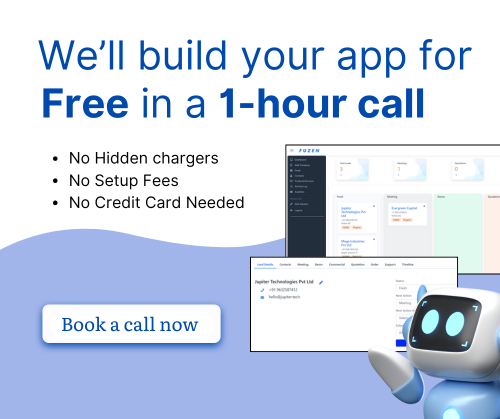Build A Reliable Fintech SaaS Solution
In the fintech industry, SaaS has become a game-changer. Fintech companies use SaaS to offer innovative financial services without the need for heavy IT infrastructure. As a result, these solutions are flexible and scalable, making them ideal for businesses of all sizes.
The growth of SaaS-based solutions in financial services is hard to overlook. They allow companies to quickly adapt to market changes and customer needs. Many financial institutions are leveraging SaaS to offer more personalized and efficient services.
- Scalability: Fintech businesses can easily expand their services without significant costs.
- Flexibility: Adapt to new changes swiftly and keep up with regulatory updates.
- Cost-effectiveness: Save money on IT infrastructure as SaaS reduces the need for on-premise hardware.
These advantages explain why SaaS is essential for fintech solutions, helping them deliver better services to customers and stay competitive.
Key Considerations for Building a Fintech SaaS Solution
Building a reliable fintech SaaS solution involves a lot more than just the tech. Here are some critical aspects you need to focus on
- Understanding Regulatory Requirements and Compliance
In fintech, understanding and adhering to regulatory requirements is crucial. Every region has its set of rules, and failing to comply can lead to severe consequences. It's essential to research and stay updated with regulations to build trust and credibility with users.
- Robust Security Measures
Protecting sensitive financial data should be a top priority. Implementing advanced security measures like encryption, multi-factor authentication, and regular security audits can safeguard data against potential breaches. This not only protects your users but also builds trust in your solution.
- Scalability
Scalability is essential as your user base grows. The solution must handle increasing loads without compromising performance. This requires choosing the right infrastructure and technology stack that support seamless scaling as demand increases.
- A User-Friendly Interface and Customer Experience
A user-friendly interface is key to retaining users. Your application should be easy to navigate, with intuitive features that enhance the customer experience. Happy users are more likely to stay and recommend your product to others.
Building the MVP (Minimum Viable Product)
Creating a Minimum Viable Product (MVP) is a crucial step in developing a fintech SaaS solution. It allows you to launch quickly with essential features and gather user feedback early in the process. Here’s how you can effectively build your MVP using a no-code platform like Fuzen.

Essential Features to Include
- User Authentication: Implement a secure login system to protect user data. With Fuzen, you can easily set up user authentication without any coding, ensuring a seamless onboarding experience.
- Dashboard: Design a simple interface displaying key metrics and user data. Fuzen’s exclusive features make it easy to create an intuitive dashboard tailored to user needs.
- Transaction Management: Provide basic tools for users to manage their transactions. Utilize pre-built components in Fuzen to streamline transaction workflows effortlessly.
- Reporting Tools: Enable users to generate simple financial reports. Fuzen allows you to integrate reporting functionalities quickly, helping users visualize their financial data.
- Notifications: Implement an alert system for transactions or important updates. This can be set up easily in Fuzen, keeping users informed and engaged.
Gathering Feedback
Once your MVP is live, collecting feedback is essential. Here are a few strategies to gather insights:
- User Surveys: Send out surveys to understand user satisfaction and needs. Tools integrated with Fuzen can help automate this process.
- Analytics: Utilize tools like Google Analytics to track user behavior and engagement with your app. Fuzen’s integration capabilities allow for easy tracking and analysis.
- Usability Testing: Conduct sessions to observe how users interact with the app. This hands-on approach helps identify areas for improvement.
Iterating Based on User Needs
With feedback in hand, you can start iterating on your MVP. Focus on what users find most valuable and enhance those aspects. It’s crucial to prioritize improvements based on their impact and the effort required for implementation.
Importance of Agile Methodologies
Agile methodologies are essential in the fintech sector, allowing teams to adapt quickly to new information and market changes. Regular sprints and stand-up meetings keep everyone aligned and focused on evolving user needs. Using Fuzen supports an agile approach by enabling rapid adjustments and updates without extensive coding.
Marketing and Scaling Your Fintech SaaS Solution
Building a reliable fintech SaaS solution is just the first part. Next, you need to effectively market your product and plan for scaling as demand grows. Let's dive into some approaches that can help.
Effective Marketing Approaches
When targeting fintech users and businesses, customize your marketing strategies. Focus on highlighting the unique benefits and features your solution offers.
- Email Marketing: Build an email list with valuable content. Share insights that can help your potential customers solve their problems.
- Webinars and Workshops: Host events to educate users about your solution. Use these platforms to engage with your audience directly.
- Case Studies: Develop case studies showcasing success stories. Real-life evidence can be more convincing than generic claims.
Reaching Your Target Audience
Finding the right channels is essential for reaching your audience effectively. Consider integrating the following methods
- Content Marketing: Share relevant and insightful content through blogs, podcasts, or videos to build a following.
- Social Media Platforms: Target platforms where fintech enthusiasts are active. Engage with them through regular updates and interactive content.
- Partnerships: Collaborate with fintech influencers or other businesses that complement your service. Joint ventures can expand your reach significantly.
Scaling Up Operations
Once your marketing strategies are in place and demand picks up, it’s crucial to scale efficiently. Here are some strategies to consider:
- Expanding Tech Infrastructure: Upgrade your tech stack to handle more users. Invest in cloud-based solutions that allow easy scaling.
- Building the Team: Hire skilled professionals to fill critical roles. A strong team can support your growing business needs.
- Automation: Automate repetitive tasks to streamline operations. This approach allows your team to focus on strategic growth initiatives.
With well-planned marketing and scaling strategies, your fintech SaaS solution can reach a broader audience and cater to their needs efficiently as your business grows.
Challenges and Solutions in Fintech SaaS Development
Building a reliable SaaS fintech solution comes with its unique set of challenges. Here, we'll look at some common hurdles and practical ways to tackle them.
Dealing with Regulatory Changes
Fintech is heavily regulated. New laws can come into play frequently, making it tricky to keep your app compliant.
- Stay Updated: Regularly follow industry news and updates from regulatory bodies.
- Compliance Team: Have a dedicated team to handle compliance and regulatory checks.
Ensuring Data Security
Data breaches are a significant concern. Protecting sensitive user information is crucial.
- Use Encryption: Always encrypt data both in transit and at rest.
- Regular Audits: Schedule frequent security assessments to identify potential vulnerabilities.
Maintaining Uptime
SaaS applications need to be available round-the-clock. Downtime can cost money and trust.
- Robust Infrastructure: Invest in reliable cloud services that offer uptime guarantees.
- Continuous Monitoring: Use monitoring tools to keep an eye on system performance 24/7.
Addressing these challenges head-on can greatly improve the reliability and trustworthiness of your fintech SaaS solution. Implementing these solutions will set you on the right path to success.
Examples of Fintech SaaS
Learning from others' journeys can be powerful. Successful fintech SaaS companies offer a wealth of insights. Their stories often highlight key strategies and decisions that led to their success. Let's delve into a couple of notable examples and what we can learn from them.
Stripe: A Payment Giant

Stripe started with a simple aim: making online payments easier. Their journey from startup to payment giant holds valuable lessons.
- Focus on Customer Needs: Stripe identified a major pain point for developers - integrating payment systems. By solving this, they gained early traction.
- Iterative Development: Instead of building everything at once, Stripe continuously improved its platform based on user feedback.
- Networking and Partnerships: Strategic partnerships with big companies boosted their credibility and reach.
Robinhood: Democratizing Finance

Robinhood brought commission-free trading to the masses. Their story emphasizes the impact of vision and timing.
- Disruptive Vision: Robinhood's founders wanted to democratize finance. This clear vision resonated with users and investors alike.
- User-Centric Technology: They built an easy-to-use app that appealed to younger demographics, who are less interested in traditional brokerage.
- Handling Criticism and Setbacks: Despite facing criticism during high-growth periods, Robinhood adapted and continually upgraded their platform to improve experiences.
Key Takeaways
- Understand and solve genuine customer pain points.
- Focus on iterative improvements and stay responsive to user feedback.
- Build strategic partnerships that can amplify reach and credibility.
- Stay true to a clear, strong vision that aligns with market needs.
- Be prepared to handle and learn from criticisms and setbacks.
These case studies show that a combination of vision, customer focus, and adaptability can pave the way for successful SaaS businesses in the fintech arena.
Conclusion
Building a reliable SaaS fintech solution is a promising venture. It's packed with potential and opportunities. This territory offers endless possibilities for innovation and growth.
Remember, a dependable solution requires careful planning, security, and a seamless user experience. These elements ensure success in the competitive fintech landscape.
Consider using platforms like Fuzen. They simplify and accelerate your development process, making your journey smoother and more efficient.

